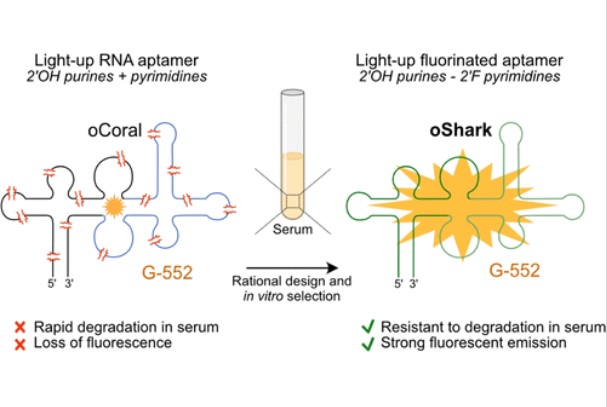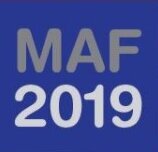Presentation
The aim of the Bioimaging and Pathology Laboratory (Laboratoire de bioimagerie et pathologies – LBP) is to study at a fundamental and applied level the properties and roles of a limited number of key biomolecules involved in various pathological processes by using a multidisciplinary (biology/chemistry/physics) and multiscale (from molecule to patient) strategy. Our strategy involves developing new therapeutic and diagnostic approaches in oncology and microbiology on the basis of information acquired at a fundamental level. A key feature of the unit is the simultaneous development and characterisation of innovative fluorescence-based tools, methods and techniques to answer these questions. This multidisciplinary approach, which combines the development of innovative fluorescent and imaging tools to address biological issues, is unique in the French scientific landscape. The laboratory is organised around 4 teams:
- The objective of the "Biophotonics of the Molecular and Cellular Interactions team (Biophotonique des Interactions Moléculaires et Cellulaires – BIMC)" is to identify the molecular mechanisms of biomolecules that play a key role in infection mechanisms and cancer development, with the goal of proposing new therapeutic avenues, while simultaneously developing innovative fluorescence microscopy and targeting approaches
- The "Photoactive Materials and Bioimaging team (Matériaux Photoactifs et Bioimagerie – MPB)" is developing multifunctional fluorescent probes and nanomaterials for biomolecular detection and biological imaging, while developing model systems that will be used to validate these probes and nanomaterials
- The objective of the "Migration, Invasion and Targeting team (Migration, Invasion et Ciblage – MIC)" is to identify the mechanisms of cell migration and invasion in the context of melanoma. In particular, its project aims to characterise the direct interactions of FAK (Focal Adhesion Kinase) and its homologue Pyk2 (Proline-rich tyrosine kinase 2) with their protein partners, with a specific focus on the mechanisms involved in the morphological changes of organelles that cause cancer initiation and progression
- The "Translational, Transversal and Therapeutic Oncology (Oncologie translationnelle, transversale et thérapeutique – ONKO3T)" team studies the functioning of the tumour in its ecosystem in order to identify: (1) cancer cell targets that can prevent tumour cell maintenance and progression mechanisms and/or microenvironmental targets that modify the tumour's ecology to make it unsuitable for survival and (2) new phenotypic, prognostic and predictive markers of response to treatment
The Bioimaging and Pathologies Laboratory also manages 2 platforms located at the Faculty of Pharmacy:
- Quantitative imaging platform PIQ-IBISA
- Spectroscopy and PeptideSynthesis Platform (PSSP)
Research topics
G quadruplex protein interactions in the control of gene expression
- Development of tools for the site-selective monitoring of nucleic acid/protein interactions
- Unfolding/folding of G4 by nucleic acid binding proteins
- Role of GQs in replication of methylation profile by UHRF1/DNMT1
Structure and dynamics of cell membranes and lipid nanoparticles
- Cellular dynamics of sphingomyelin
- Upconverting nanoparticles for the long-term study of lipid domain dynamics at the surface of living cells
- Characterisation and monitoring of the intracellular fate of lipid nanoparticles (LNPs) delivering mRNA
Technological and methodological developments
- Biophysics of nucleic acids in solution and in the cellular environment
- Biomolecular interactions in solution
- Tracking of single molecules and membrane organisation
Molecular fluorescent probes
- Fluorescent probes for cellular organelles
- Probes for advanced microscopy
- Probes for specific molecular recognition
Photoactivatable nano-biomaterials
- Fluorescent nanoparticles
- Biosensors for diagnostics
- Photoactive polymer nanowires
Artificial and cellular organelles
- Lipid organelles
- Non membrane-bound organelles
Research and validation of targets and treatments
- ENT tumours
- Brain tumours
- Paediatric tumours
Research and validation of (bio)markers and development of tools for diagnostic use
- ENT tumours
- Brain tumours
- Paediatric tumours
Link between alteration and positioning of organelles, protein dynamics and tumour invasion in melanoma
- Analysis of organelle morphology and positioning
- Analysis of organelle protein dynamics: the example of invadopodia
- Targeting the FAK protein
Major events and works
- P. Fechter et al., "Aptamer and use thereof", European Patent Application (brevet européen), n° EP 18306664.6, 2018
- H. Karnib et al., "The nucleic acid chaperone activity of the HIV-1 Gag polyprotein is boosted by its cellular partner RPL7: a kinetic study". Nucleic Acid. Res. 48, 9218-9234, 2020
- V. Kilin et al., "Dynamics of methylated cytosine flipping by UHRF1". J. Am. Chem. Soc. 139, 2520-2528, 2017
- M. Abe et al., "PMP2/FABP8 induces PI(4,5)P2-dependent transbilayer reorganization of sphingomyelin in the plasma membrane". Cell. Rep. 37, 109935, 2021
- D. Danylchuk et al., "Targeted solvatochromic fluorescent probes for imaging lipid order in organelles under oxidative and mechanical stress". J. Am. Chem. Soc. 143, 912-924, 2021
- K. Trofymchuk et al., "Giant light-harvesting nanoantenna for single-molecule detection in ambient light". Nature Photonics 11, 657-663, 2017
- G. Renner et al., "Integrin α5β1 and p53 convergent pathways in the control of anti-apoptotic proteins PEA-15 and survivin in high-grade glioma". Cell Death Diff. 23, 640-653, 2016
- A. Mousson et al., "Inhibiting FAK–paxillin interaction reduces migration and invadopodia-mediated matrix degradation in metastatic melanoma cells". Cancers 13, 1871, 2021



